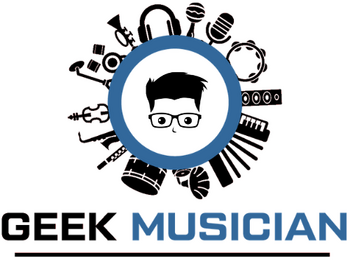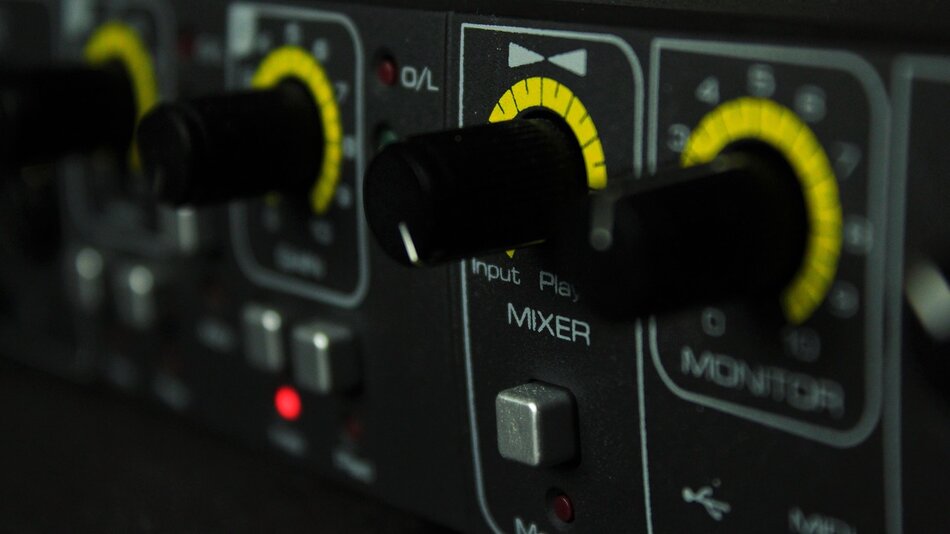
If you’re in the market for a 16-channel audio interface, then you’re at the right place. In this article, we’re going to talk about five of the best audio interfaces with 16 input channels, and then, more importantly, give you tips on how to choose which one is best for your audio setup. Let’s get straight into it.
In a hurry? Here are my top picks:

Presonus Studiolive 16R
My no. 1 pick in this list is the Presonus Studiolive 16R. This 16 channel audio interface can also serve as a digital mixer for live purposes. And it has no latency at all becausee it has an onboard Digital Signal Processor (DSP). Also, all 16 input ports have combo jacks so you can connect both XLR and 1/4″ connectors easily.
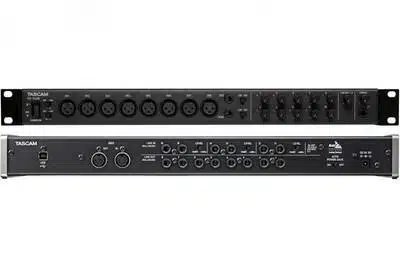
Tascam US 16×08
My no. 2 pick will be the Tascam US 16×08 Audio Interface. And that’s mainly because it’s the cheapest option on this list yet powerful. It’s a simple, straight to the point 16 channel audio interface that gets the job done.
Table of Contents
Quick Summary
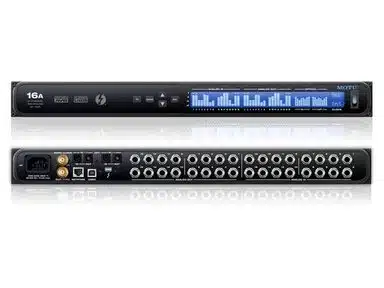
MOTU 16A Thunderbolt/USB Audio Interface
- LCD screen for monitoring audio signal
- Easy to Setup
- Digital inputs to connect external devices

Tascam US 16×08 Audio/MIDI interface
- Onboard DSP allows for no latency monitoring
- Digital inputs to connect external devices
- Very affordable
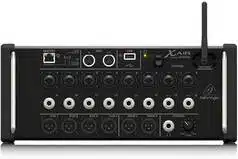
Behringer XR16
- Can be used live as a digital mixer and audio interface
- No latency

ESI U168 XT Audio Interface
- More 1/4″ ports, less XLR ports, makes it perfect for home music studio
- Digital inputs to connect external devices

Presonus Studiolive 16R
- Can be used as a digital mixer for live performances and for multitrack recording
- Powerful onboard DSP for processing audio signal
Things to Consider when choosing an Audio Interface
Before I delve into the 5 best 16-channel audio interfaces available, let me first talk about some of the things you need to consider when choosing an audio interface.
This will serve as a guide for you whenever you intend to acquire an audio interface for your audio setup. After reading this, you will already have a clear picture of the type of audio interface you need for your setup.
1. Number and Type of Inputs/Outputs
When choosing an audio interface, one question you should always ask is, “how many outputs and inputs do I need?” This is one of the first things you should consider.
This is because the inputs and output ports that an audio interface comes with enable you to connect relevant instruments and studio gear to them whiles recording.
Obviously, we’ll be talking about audio interfaces with 16 input channels and I believe that’s what you’re looking for. But what number of outputs will be enough for you? Here’s what you need to consider.
If you are in a home studio where you mostly produce and record by yourself, a two-channel audio output on your audio interface is enough.
On the other hand, if you use outboard gear and hardware audio effects, you may need an audio interface with multiple output channels. This will allow you to route audio from your DAW to any outboard gear connected to your audio interface’s several outputs.
Also, if you intend to record a band or multiple performers at a time, you should get an audio interface with multiple outputs. With multiple outputs on your interface, you can have different in-ear monitor mixes for the performers.
The number of outputs on the audio interface you’ll require will depend on the number of outboard gear or monitor mixes you’ll require for the performers you’re recording.
2. Type of Inputs/Output Port
Apart from the number of input and output ports, you should also consider the type of input and output ports an audio interface comes with.
Typically, audio interfaces usually come with two types of audio connectors – XLR and ¼”. Most audio interfaces give you a combination of both. But some audio interfaces provide only either XLR or ¼” input or output ports.
So here’s what you need to consider.
If you’re planning to record mostly with microphones, then you should get an audio interface with more XLR input ports.
On the other hand, if you’re going to record mostly instruments such as keyboards and synthesizers, or outboard audio effects, then you should consider an audio interface with more ¼” input connectors.
The XLR inputs are meant for receiving signals from microphones and come with pre-amps. However, some audio interfaces combine both line level and mic level channels into a combo channel.
Aside from XLR and ¼ inch ports, some audio interfaces may come with a number of digital input and output channels. These digital input channels can come in handy whenever a setup expansion requires the use of digital channels.
3. Digital Signal Processor (DSP) and Phantom Power
Some audio interfaces come with onboard digital signal processing (or DSP) but many don’t.
Audio interfaces with onboard DSP have built-in effects and a microprocessor that allow you to process any audio signal received by the audio interface before it is sent to the DAW.
If you’re a producer that prefers to apply effects such as compression or EQ to signals before they are recorded by a DAW, then you should consider an audio interface with an onboard DSP, else you can go for any audio interface.
Keep in mind that audio interfaces with onboard DSP are slightly more expensive than the ones without.
A digital signal processor is basically a microprocessor chip that is mostly used in building telecommunication and digital audio signal processing systems. The work of a digital signal processor is to receive real-world signals, in this case, audio signals, and process them digitally.
Additionally, some audio interfaces offer extra features such as phantom power. This phantom power provides power to condenser microphones to function.
So if you use condenser mics in your audio setup, then you should find an audio interface that supplies phantom power, else the condenser mic won’t work. To learn why this is so, read this article.
4. Connection Port to Computer
Though this is the last point I am going to talk about, it is the most important and must not be overlooked.
There are three main types of ports on audio interfaces to connect to your computer – USB, Thunderbolt, and Firewire.
USB audio interfaces are the most popular options available. And that’s because every computer has a USB port.
Thunderbolt audio interfaces are much faster at transferring audio from the interface to the computer. But they are not as common and are slightly more expensive than USB interfaces.
Firewire audio interfaces are exclusively made for Macs with Firewire ports. And they are known to be slightly more stable than USB interfaces. However, Firewire audio interfaces are gradually fading out of the system. And that’s because newer Macs don’t have Firewire ports and USB ports are getting better
The 5 Best 16 Channel Audio Interfaces
Now that we have taken a look at some of the important things that need to be taken into consideration when choosing an audio interface, let me introduce you to five of the best audio interfaces available on the market.
The truth is, there are lots of companies that make audio interfaces. Due to this, you will always find tons of audio interfaces on the market. Some of these audio interfaces are of high quality, others are not.
1. Motu 16A Thunderbolt/USB Audio Interface

The Motu 16A is, without a doubt, one of the best audio interfaces available today. And you’ll understand why in a moment.
Firstly, it’s part of the new high-performance audio interfaces produced by MOTU. This was actually the very first Thunderbolt audio interface in the world. And it has been engineered to have state-of-the-art features and components that enable this audio interface to output audio of great quality.
Some of these include an onboard DSP mixer. And this means you can run all the signal through some effects before it is sent to the DAW for recording. And the onboard microprocessor helps in latency-free monitoring.
It also comes with a very intuitive mixing interface which can be accessed from the computer.
This is a very helpful tool that allows you to add effects to individual channels quite easily, and also makes it easy to mix in-ear monitors for the performers which overall leads to better performance and recording.
This audio interface has 16 balanced/unbalanced analog inputs and 16 output ports.
It also has 2×8 channel ADAT optical input and output ports. These provide you with a lot of options for connecting your microphones and other instruments. The channels produce some of the cleanest audio you can ever come across.
Additionally, the Motu 16A comes with an Ethernet which allows you to control it from a smart device. You can hook it up to a wireless router to enable you to control the onboard mixer from an iOS device.
This is a high-performance audio interface. Therefore, if you are on the market for an audio interface that can be used for a large number of professional audio applications, then you should definitely check this out.
Pros
- LCD screen for monitoring audio signals
- Digital inputs to connect external devices
- Easy to setup
Cons
- You can connect only 1/4″ cables
Bottom Line
If you’re looking to record with microphones, this is not the one to go for. Check out the other audio interfaces in this article. However, if you are need an audio interface for your outboard gears and synthesizers in your studio, the Motu 16A is an excellent audio interface you should definitely consider.
2. Tascam US 16×08 Audio/MIDI interface

The Tascam US 16×08 is an audio interface with great hardware and 16 channels of input. 8 of these input channels have ultra-high definition microphone preamp inputs while the other 8 inputs are line-level inputs.
It has eight ¼ inch balanced outputs and a stereo headphone output as well. This audio interface comes with a 4-band EQ and compression for each input channel.
The Tascam US 16×08 has an onboard DSP. Its onboard DSP is known for its handy processing and low-latency mixing. This audio interface has a +48V phantom power which is switchable for some of the channels and a MIDI input and output as well.
It also has a Class-compliant USB which is compatible with Windows PCs and Mac.
One great thing about this audio interface is, that it is easy to set up. Its preamps are of great quality and are able to keep audio signals strong yet generate little noise as well. Thus for the price it comes at, purchasing this audio interface is definitely a bargain.
Early versions of this audio interface had a number of issues with its drivers and software including high CPU usage, crashes, and more. And this audio interface had some negative reviews as a result of that. However, this is an issue of the past
Thankfully, a new Windows software compatible settings panel which help to improve driver stability has been released. Due to this, most of these software issues have been resolved significantly.
Therefore, you will not go wrong with this new software settings panel of this audio interface by Tascam.
Pros
- Onboard DSP allows for no latency monitoring
- Very affordable
- Rackmountable
Cons
- Middling long range performance
Bottom Line
Overall, users of the Tascam US 16×08 are impressed by its performance. Therefore, if you are on the market for a great 16-channel audio interface, then you should definitely pay close attention to the Tascam US-16×08. Especially if you are running on a tight budget.
3. Behringer XR16

Unlike all the other devices discussed in this article, the Behringer XR16 is quite unique. Why do I say so?
Well, Behringer XR16 is a full-fledged digital mixer with a built-in audio interface. And honestly, I think that over time, this is the direction many audio interface manufacturers will head towards.
The Behringer XR16 is a 16-input and 6-output channel audio interface. 8 of these input channels have Midas preamps hence accept microphone level signals. The remaining 8 are for line level.
And because this is a digital mixer, this has a very powerful onboard DSP. All the channels have a low-cut filter, noise gate, compressor, and an EQ. So if you prefer to process your signal before recording, this is an excellent option.
Additionally, it has a 100-band Real Time Analyzer on every channel and a 4-band EQ as well as an FX rack for delivering studio-quality effects.
You can use this mixer as an audio interface by connecting it to your computer via USB. By doing so, you have access to all channels on the XR16 in your DAW. This means you’ll be able to record all 16 input channels and 6 output channels into your DAW.
For small bands that perform live and also like to multitrack record their performances, the Behringer XR16 is an excellent option. And that’s because you get a latency-free monitor mix and it is rack-mountable.
Behringer XR16 comes with Android, iOS, macOS, and PC apps that allow you to control this digital mixer and audio interface. You’ll have to connect your device to the same network as the digital mixer.
For this reason, Behringer XR16 comes with a built-in Wi-Fi router. But I’ll recommend you get a dedicated Wi-Fi router if you decide to go with this mixer.
Check out our article on the best Wi-Fi routers for digital mixers to learn more about which type of Wi-Fi is best for the Behringer XR16
Pros
- Can be used live as a digital mixer and audio interface
- No latency
- Powerful DSP with effects to process your audio signal
- Useful app that gives you total control of the console
Cons
- No faders, knobs and buttons on unit to control it
Bottom Line
If you’re looking for a powerful digital mixer that you can use live at the same time, multitrack your performances into a DAW, the Behringer XR16 is an excellent option to go for.
4. ESI U168 XT

The ESI U168 XT is a compact audio interface that will stand out in your studio due to its aesthetics. It comes in an orange chassis with an orange and black color scheme that makes it very eye-catching
The ESI U168 XT is a professional 24-bit USB audio interface and is built to have 16 line inputs with balanced ¼” TRS connectors.
Apart from the 16 input channels it comes with, it has 8 output channels with ¼” TRS connectors as well. All of these channels can be used simultaneously.
Of its 16 input channels, 4 of them are XLR inputs with integrated microphone preamps and +48V phantom power support.
This audio interface has 2 Hi-Z instrument inputs for electric guitars. Additionally, it has coaxial digital input and outputs with RCA connectors.
If you use lots of microphones when recording, this will not be the best option for you. That’s because you can plug up to 4 mics into this interface.
However, this is an excellent audio interface for producers that have many keyboards, synthesizers, and outboard hardware audio effects to record.
It also comes with two independent headphone outputs meaning the headphone outs can have separate mixes. These headphone outputs are close to its integrated monitoring mixer. This integrated monitoring mixer is located on the front panel.
Pros
- More 1/4″ ports, less XLR ports, makes it perfect for home music studio
- Digital inputs to connect external devices
- Two independent headphone ports makes it great for a two-person collaboration
Cons
- No DSP and onboard effects
Bottom Line
This is a simple, straight-to-the-point audio interface that easily gets the job done and you
5. PreSonus StudioLive 16R
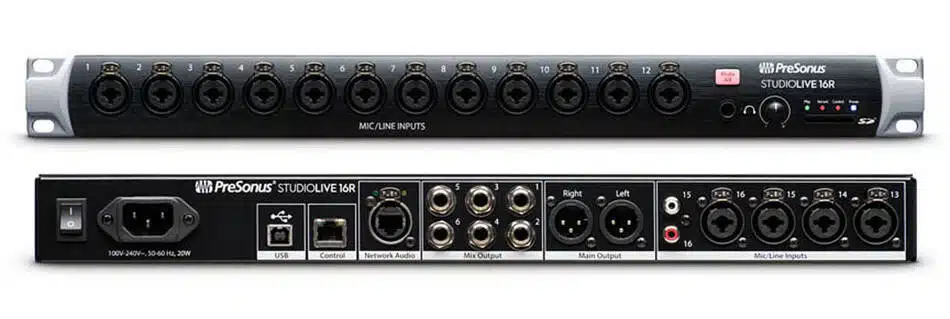
Just like the Behringer XR16, The Presonus StudioLive 16R is also a digital mixer with a built-in audio interface. It is undoubtedly one of the best 16-input channel digital mixers for your audio rack.
All the 16 input channels have an XLR ¼” combo jack which serves as a mic/line input. This means you can connect either an XLR or ¼” audio cable on any channel that you want.
And also all the channels have built-in XMAX preamps that enable them to produce great sound with a low noise floor. If you record mostly microphones, this is an excellent audio interface to go for.
There are multiple ways to multitrack record audio on this digital mixer/audio interface. One way is to connect it via USB to your computer and record it directly into your DAW of choice.
Another way is that you can plug in an SD card directly into this console and record all channels on the SD card. This can be quite handy when there’s no computer available or you’re playing at an event with no computer. Very useful.
This Presonus StudioLive has to be connected to a wireless router to access wireless control. This feature enables you to control the StudioLive 16R via smart devices or computers such as using an iPad, tablet, or Windows laptop. And it’s easy to set it up.
You can use the Presonus Studiolive 16R as a standalone digital mixer for live events or you can use it as a stagebox for Presonus StudioLive Series III mixers.
There is a 32 input version of this mixer known as Presonus Studiolive 32S for those looking for more I/O. Check out my comparison of the Presonus Studiolive 32S and the Midas M32 here.
Pros
- Can be used as a digital mixer for live performances and for multitrack recording
- Can also be used as a stagebox for Presonus StudioLive Series III mixers
- Powerful onboard DSP for processing audio signal
- No latency monitoring
Cons
- No knobs, faders and buttons to control console
Conclusion
All of the audio interfaces I’ve talked about in this article are excellent 16-channel audio interfaces you can go for. Obviously, they differ in features, type of input, and output ports, but they all get the job done.
So go with one that fits your needs and budget.
If you’re someone who multitrack records bands live, I recommend the digital mixer options mentioned. And if you work mostly with synths, keyboards, and outboard gear, you should go for the option with more line inputs and ¼” connectors.
If you record mostly microphones, then you should consider options with more XLR input channels and built-in preamps, and perhaps phantom power.
If you found this article helpful or at least informative, do well to share it with someone who may need it.

Hi, I’m Raymond. A keyboard player, music producer, and writer. And I’m also the founder of this blog. As someone who has been working with several audio and music equipment and different musicians for many years, my goal is to answer all your questions on music and equipment, as well as the latest music software and technology. For more info, check out my about me page
